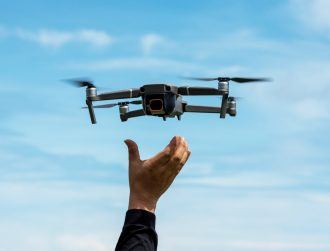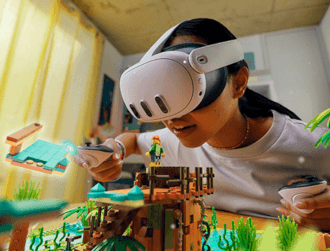
Image: © Dilok/Stock.adobe.com
A recent framework predicts 6G will pave the way for concepts like mixed reality, holograms and global automation, while researchers strive to make these networks a reality.
The uptake of 5G continues to grow steadily, giving people faster downloads speeds, greater connectivity and boosts for technologies like virtual reality and AI.
There are estimates that 5G subscriptions worldwide will reach just under 5bn by 2026, with roughly 1bn reached by the end of last year. The difference between 5G and 4G is significant, with much faster download speeds and a latency of less than 5 milliseconds.
But the limits to these mobile networks have not been reached, with organisations worldwide looking to the next technology standard – 6G. Some organisations predict 6G could be 100 times faster than 5G, with enhanced reliability and wider network coverage.
It may be some time until we get there however. Some groups predict that 6G could be a reality as early as 2025, but most estimates point to a commercial release in roughly 2030.
But what will this improved standard mean in reality? Beyond near-instant downloads, what benefits will faster mobile networks bring to the world?
Connecting reality with digital
Despite the potentially long wait to 6G, organisations worldwide are already preparing for its arrival. The International Telecommunication Union (ITU) recently released its recommendations for a global standard in terms of 6G, its development timeline and how it will be used.
This UN organisation is focused on information and communication technologies. It has 193 member states and is supported by 900 companies, universities and international organisations.
The ITU’s framework on 6G predicts that this technology will have various impacts, such as “connecting the unconnected”, by extending broadband and IoT services into remote and sparsely populated areas.
The framework also expects 6G to allow for “immersive communication”, making concepts like mixed reality and holographic communications more feasible.
The recommendations have been supported by various tech giants, including Huawei, which described 6G as the “next playground of innovations”.
“The ambition of our 6G vision is to make our planet and the human society as a whole an intelligently connected and sustainably developed global village,” the company said.
In a recent interview, Hyunjoong Lee of Samsung Research said he expects the “6G era” to enhance human experiences by “seamlessly connecting the real world and the digital world”. Samsung said he “actively participated” in the ITU’s 6G recommendations.
The recommendations suggest 6G will make various other technologies a reality, such as automated driving, smart city applications, IoT devices that don’t need long-life batteries and autonomous collaboration between devices.
Making various technologies feasible
Many emerging concepts are expected to require more bandwidth and low latencies to function properly, such as robots working in warehouses, swarms of autonomous drones or fleets of self-driving vehicles.
While there are already working examples of these products, deploying them at scale could require more capacity than modern networks can handle, along with an increase in the amount of energy used.
This is a concern for scientists working on ‘Desire6G’, a European consortium that is working to create prototype 6G architecture to improve the capabilities of current networks.
These researchers are developing a combination of terahertz communication, AI and machine learning to design hardware and software components for a new wireless communications system.
Carlos Bernardos, a researcher on the project and a lecturer at the Charles III University of Madrid, said these developments will allow applications such as augmented reality and spatial computing to be “viable and more efficient”.
“With current technologies, these examples of applications are directly unfeasible or have fields of use which are limited to a narrow set of cases,” Bernardo said. “Reducing the energy consumption and carbon footprint of communications networks is a growing concern due to the importance of networks in today’s multi-level society.”
10 things you need to know direct to your inbox every weekday. Sign up for the Daily Brief, Silicon Republic’s digest of essential sci-tech news.






